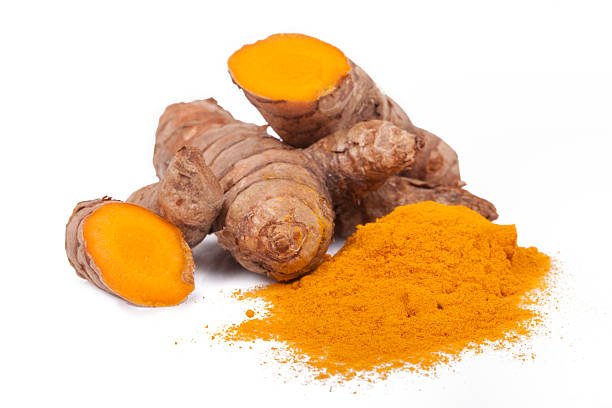Turmeric, a member of the ginger family, is indigenous to Southeast Asia and is cultivated extensively in that region, particularly in India. Its rhizome, or underground stem, serves both as a culinary spice and a staple in traditional medicine. The key aromatic constituents include
turmerone, arturmerone, and zingiberene.
Erode, a municipality nestled in the South Indian state of
Tamil Nadu, stands as the globe’s principal producer and pivotal trading hub , earning it the epithets
“Yellow City” and “Turmeric City.” Renowned for its vibrant yellow hue, it is also dubbed “
Indian saffron.”
The primary component within the root is a volatile oil, featuring turmerone, alongside other pigments known as curcuminoids, which provide:
Nutrition Facts:
| Nutrient/Minerals |
100g Turmeric Content |
| Fat |
10g |
| Saturated Fat |
3g |
| Calcium |
0.2g |
| Phosphorous |
0.26g |
| Sodium |
10mg |
| Potassium |
2500mg |
| Iron |
47.5mg |
| Thiamine |
0.9mg |
| Riboflavin |
0.19mg |
| Niacin |
4.8mg |
| Ascorbic Acid |
50mg |
| Carbohydrates |
69.9g |
| Dietary Fiber |
21g |
| Sugar |
3g |
| Protein |
8g |
| Energy |
390Kcal |
As a natural antioxidant, turmeric also serves as a rich source of
ω-3 fatty acids and α-linolenic acid.
Key Health Benefits of Turmeric:
Digestive Health :
It is highly regarded for its digestive properties, particularly in the treatment of ailments such as familial adenomatous polyposis, inflammatory bowel disease, and colon cancer. Traditional remedies often involve consuming it with milk or water to address intestinal disorders.
In traditional Chinese medicine, it finds use in treating conditions associated with abdominal discomfort, and its incorporation into various dishes aids in
digestion and alleviates gas and bloating. It exhibits anti-inflammatory, choleretic, antimicrobial, and carminative properties, aiding in fat digestion and overall digestive function.
Arthritis Relief:
For arthritis, recommended dosages range from 8–60 grams of fresh turmeric root thrice daily.
Ayurvedic Applications:
Within Ayurvedic practices, it is utilized to enhance overall bodily energy, alleviate gas, expel worms, improve digestion, regulate menstruation, and dissolve gallstones.
Skin Care:
Across Asian nations, it is celebrated for its skin-enhancing properties, often incorporated into skincare products by multinational corporations. It promotes a radiant complexion and aids in blood purification and circulation. Traditional practices in the Indian subcontinent include its use in pre-wedding rituals for body purification. A simple mask of Greek yogurt, honey, and turmeric applied to the face for 15 minutes can reduce inflammation and scarring.
Respiratory Health:
Powder serves as a well-established remedy for various respiratory conditions such as asthma, bronchial hyperactivity, allergies, and liver disorders. Mixed with milk or water, it is consumed to alleviate sore throats and coughs.
Turmeric as Cancer Prevention:
Studies suggest it’s potential in inhibiting the development of skin, breast, oral, and stomach cancers through various mechanisms, including mutation inhibition, carcinogen detoxification, reduced cell proliferation, and induction of tumor cell
apoptosis.
Wound Healing and Ulcer Treatment:
It’s curcumin content aids in wound healing by reducing inflammation and oxidation, resulting in quicker healing of cutaneous wounds and ulcers. It has also shown efficacy in healing
peptic ulcers.
Other Applications:
It is also utilized to enhance overall
bodily energy, alleviate gas, expel worms, improve digestion, regulate menstruation, dissolve gallstones.
Turmeric finds its way into a multitude of manufactured food products, including canned beverages, dairy items, baked goods, ice cream, cakes, yogurt, orange juice, biscuits, popcorn, sweets, sauces, and gelatins.



